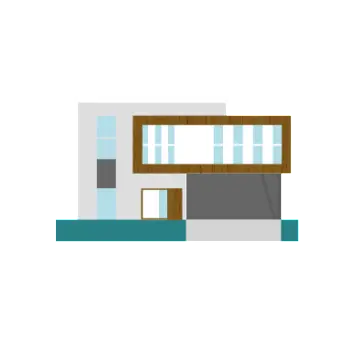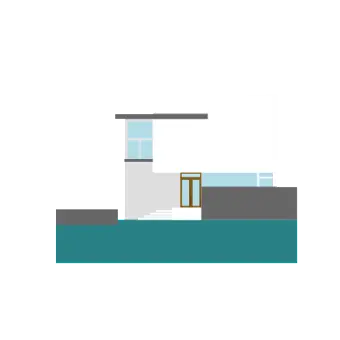Many first-time homebuyers may avoid the idea of buying a new home, due to the common misconceptions that it will be too expensive and take too long to complete. However, buying new construction is different from purchasing an existing home, and these misconceptions may prevent potential homebuyers from considering a viable path to homeownership that could be beneficial for them.
Here are some of the new home myths and misconceptions that should be considered before making assumptions that can affect your lifestyle significantly.
1. New construction homes are more expensive
While the upfront cost of new construction homes may be higher than older homes, it is important to consider the total cost of ownership and value of features and finishes included. A new home comes with a brand-new roof, appliances, HVAC equipment and major systems, which may not need to be repaired or replaced for a long time, saving the buyer from additional costs. Additionally, new homes often have energy-efficient features, which can lower utility costs over time. Therefore, it is important to consider all costs and factor in the remaining life expectancy of the components in a pre-owned home to understand the true cost of ownership.
2. It’s harder to finance a new home
This is actually false, a new home may actually be easier to finance than an older home as there are more options in some cases. Builder incentives and the lower risk associated with buying new construction can make the process smoother. Builders often have relationships with lenders or subsidiaries whose primary focus is to help borrowers find better lending options. Smaller builders that do not have an affiliated lender will typically work with a local mortgage broker to assist buyers in securing loans.
3. New-construction homes are of poorer quality than pre-owned homes
New-construction homes are subject to the latest building codes which have become more stringent over time. New homes are required to meet improved electrical wiring requirements, higher insulation requirements, more efficient air conditioners and improvements in plumbing, among other things. Additionally, construction principles do not change whether it is a new or pre-owned home, as the house will be built to a requisite standard, likely outdated ones in the case of older homes. It’s up to you to understand the hundreds of design and construction details and compare them to current building standards when considering an existing home. Buyers can conduct home inspections and see construction details first hand even before settling on a builder. Buyers can also periodically inspect the home throughout the build, giving them and their inspector a better understanding of the home’s build quality, and of course, the pre-delivery inspection.
4. New homes lose their value faster than pre-existing properties
As an appreciating asset, new-construction homes will generally appreciate in value even before their buyers have moved in. Unless in the middle of a housing downturn, pricing in a new community will increase as the homes are sold and usually another spike in value once the entire community is completed. Viewed from a real-estate investment perspective there are very many location-specific factors that impact your home value, not to mention your specific project costs. Becoming familiar with local real estate values and trends is important but not overly difficult or as complex as an agent or uninformed friend may infer.
5. New-construction homes lack character
The value builders place on aesthetic qualities can vary wildly, as does the nature of the service they provide. Some builders build homes on spec with predetermined specifications, while others allow for a variety of selections and upgrades, or go even further to create a highly tailored experience and involve you in every detail of the process. It’s important to research the builder’s portfolio as well as their design staff before making a decision. Generally speaking, a timeless character is a result of how well the designer purposefully executes a theme that’s consistent across the entire home.
6. You’ll be waiting a long time to move in
Construction of new homes can take on average about 6-8 months from start to finish. However, this does not necessarily mean that buyers will have to wait that long to move in. Many builders start construction on spec homes before having a buyer, which means that the construction of the home may be well underway or even completed before a buyer makes a purchase. If you want to avoid waiting, you can check if there is a spec home available.
7. You need to work with a Realtor to buy a new home
A new-construction is similar to any other real estate transaction, there might be an opportunity for you to negotiate on the price, contract terms, add-ons, completion date, and other incentives. The beauty with a new home is that you can very transparently compare apples to apples across multiple options. Having a real estate agent can help or add bias, but slightly more so with new construction deals as they may lean towards a builder they are familiar with or benefit them the most.
We’re happy to discuss any of your concerns or questions as well as help inform your home buying research regardless of what stage you’re in.






